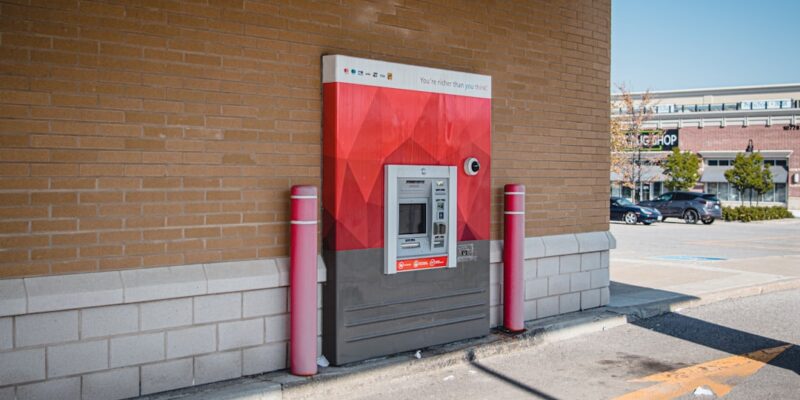
Unlocking Business Growth: How Lease and Asset Finance Can Help You Achieve Your Goals
Lease and asset finance is a type of financing that allows businesses to acquire assets such as equipment, machinery, vehicles, or property without the need for a large upfront payment. Instead, the business enters into an agreement with a leasing company or financial institution, where they make regular payments over a fixed period of time. At the end of the lease term, the business may have the option to purchase the asset or return it to the lessor.
Lease and asset finance is an important tool for businesses as it provides them with the flexibility to acquire necessary assets without tying up a significant amount of capital. This type of financing is particularly beneficial for businesses that require expensive equipment or technology to operate efficiently. By leasing these assets, businesses can conserve their cash flow and allocate their resources towards other areas of their operations.
Key Takeaways
- Lease and asset finance can provide businesses with access to equipment and assets without the need for large upfront payments.
- Benefits of lease and asset finance include improved cash flow, tax advantages, and the ability to upgrade equipment regularly.
- Lease and asset finance can help businesses grow by providing access to the latest technology and equipment, allowing for expansion and increased productivity.
- Different types of lease and asset finance include operating leases, finance leases, and hire purchase agreements.
- To determine if lease and asset finance is right for your business, consider factors such as cash flow, equipment needs, and long-term goals.
Understanding the Benefits of Lease and Asset Finance
1. Cost-effective financing option: Lease and asset finance is a cost-effective alternative to purchasing assets outright. Instead of making a large upfront payment, businesses can spread the cost over a fixed period of time through regular lease payments. This allows businesses to preserve their working capital and use it for other purposes such as marketing, hiring new employees, or expanding their operations.
2. Improved cash flow management: Lease and asset finance helps businesses manage their cash flow more effectively. Instead of depleting their cash reserves to purchase assets, businesses can make smaller monthly payments over the lease term. This allows them to maintain a healthy cash flow and have more financial flexibility to meet their day-to-day expenses and obligations.
3. Tax benefits: Lease and asset finance can provide businesses with tax advantages. In many jurisdictions, lease payments are considered operating expenses and can be deducted from taxable income. This reduces the overall tax liability of the business and can result in significant savings.
4. Access to latest technology and equipment: Lease and asset finance allows businesses to stay up-to-date with the latest technology and equipment without the need for a large upfront investment. This is particularly important in industries where technology is rapidly evolving, and businesses need to constantly upgrade their equipment to remain competitive. By leasing assets, businesses can easily upgrade to newer models or technologies as they become available.
How Lease and Asset Finance Can Help Your Business Grow
1. Expansion of business operations: Lease and asset finance can facilitate the expansion of business operations. By acquiring the necessary assets through leasing, businesses can enter new markets, open additional locations, or increase their production capacity. This allows them to reach a larger customer base and generate more revenue.
2. Increased productivity and efficiency: Lease and asset finance enables businesses to acquire the equipment and technology they need to improve their productivity and efficiency. By using state-of-the-art machinery or software, businesses can streamline their operations, reduce manual labor, and increase output. This not only improves the bottom line but also enhances the overall competitiveness of the business.
3. Improved customer satisfaction: Lease and asset finance can help businesses enhance their customer satisfaction levels. By investing in assets that improve the quality or speed of their products or services, businesses can better meet the needs and expectations of their customers. This can result in increased customer loyalty, repeat business, and positive word-of-mouth referrals.
4. Competitive advantage: Lease and asset finance can give businesses a competitive edge in the market. By having access to the latest technology or equipment, businesses can differentiate themselves from their competitors and offer superior products or services. This can attract more customers and allow the business to command higher prices or margins.
The Different Types of Lease and Asset Finance Available
| Lease/Asset Finance Type | Description | Advantages | Disadvantages |
|---|---|---|---|
| Operating Lease | A lease agreement where the lessee rents an asset for a short period of time, typically less than the useful life of the asset. | Lower monthly payments, no ownership risk, tax benefits. | No ownership at the end of the lease, higher overall cost, limited flexibility. |
| Finance Lease | A lease agreement where the lessee rents an asset for the majority of its useful life and has the option to purchase the asset at the end of the lease term. | Lower monthly payments, tax benefits, option to purchase at the end of the lease term. | Higher overall cost, ownership risk, limited flexibility. |
| Hire Purchase | A financing agreement where the lessee makes regular payments to purchase an asset over time. | Ownership at the end of the agreement, tax benefits, flexible payment options. | Higher overall cost, ownership risk, limited flexibility. |
| Chattel Mortgage | A financing agreement where the lender provides funds to purchase an asset and takes a mortgage over the asset as security. | Ownership at the end of the agreement, tax benefits, flexible payment options. | Higher overall cost, ownership risk, limited flexibility. |
1. Operating lease: An operating lease is a short-term lease agreement where the lessor retains ownership of the asset. The lessee pays regular lease payments for a fixed period of time, typically less than the useful life of the asset. At the end of the lease term, the lessee can return the asset to the lessor or enter into a new lease agreement.
2. Finance lease: A finance lease is a long-term lease agreement where the lessee has the option to purchase the asset at the end of the lease term. The lessee pays regular lease payments over the lease term, which are typically higher than in an operating lease. At the end of the lease term, the lessee can choose to exercise the purchase option and acquire ownership of the asset.
3. Hire purchase: Hire purchase is a type of financing where the business pays regular installments over a fixed period of time to acquire ownership of an asset. The business takes possession of the asset immediately but does not own it until all payments have been made. This type of financing is commonly used for vehicles or equipment.
4. Chattel mortgage: A chattel mortgage is a type of financing where the business uses an asset as security for a loan. The business takes ownership of the asset immediately and makes regular loan repayments over a fixed period of time. Once all repayments have been made, the business obtains clear title to the asset.
How to Determine if Lease and Asset Finance is Right for Your Business
1. Evaluation of business needs: The first step in determining if lease and asset finance is right for your business is to evaluate your specific needs. Consider what assets you require to operate your business effectively and whether leasing would be a suitable option for acquiring those assets. Assess factors such as the useful life of the assets, their depreciation rate, and their potential resale value.
2. Assessment of financial situation: Next, assess your financial situation to determine if lease and asset finance aligns with your cash flow and budgeting requirements. Consider your current cash reserves, projected revenue, and expenses to determine if you can comfortably make regular lease payments without jeopardizing your financial stability.
3. Comparison with other financing options: Finally, compare lease and asset finance with other financing options available to your business. Consider factors such as interest rates, fees, repayment terms, and flexibility. Evaluate the pros and cons of each option and choose the one that best suits your business needs and financial situation.
The Process of Applying for Lease and Asset Finance
1. Documentation requirements: To apply for lease and asset finance, you will need to provide certain documentation to the leasing company or financial institution. This typically includes financial statements, tax returns, bank statements, business plans, and any other relevant information about your business.
2. Credit assessment: Once you have submitted the required documentation, the leasing company or financial institution will conduct a credit assessment to evaluate your creditworthiness. They will review your financial statements, credit history, and other factors to determine if you are eligible for lease and asset finance.
3. Approval process: If your credit assessment is successful, the leasing company or financial institution will proceed with the approval process. They will review your application and make a decision on whether to approve or decline your request for lease and asset finance. This process may take a few days to a few weeks, depending on the complexity of your application.
4. Disbursement of funds: If your application is approved, the leasing company or financial institution will disburse the funds to you. This may be done through a direct deposit into your business bank account or by issuing a check. You can then use the funds to acquire the assets you need for your business.
Tips for Choosing the Right Lease and Asset Finance Provider
1. Reputation and experience: When choosing a lease and asset finance provider, consider their reputation and experience in the industry. Look for providers that have a track record of working with businesses in your industry and have positive reviews from their clients.
2. Interest rates and fees: Compare the interest rates and fees charged by different lease and asset finance providers. Look for providers that offer competitive rates and transparent fee structures. Consider the overall cost of the financing option and how it aligns with your budget and financial goals.
3. Flexibility of terms and conditions: Evaluate the flexibility of the terms and conditions offered by lease and asset finance providers. Look for providers that offer customizable repayment schedules, early repayment options, and the ability to upgrade or add assets during the lease term.
4. Customer service and support: Consider the level of customer service and support provided by lease and asset finance providers. Look for providers that are responsive, knowledgeable, and willing to work closely with you to meet your specific needs. Good customer service can make a significant difference in your overall experience with the provider.
How to Use Lease and Asset Finance to Achieve Your Business Goals
1. Strategic planning: Use lease and asset finance as a tool for strategic planning. Consider how acquiring certain assets can help you achieve your long-term business goals. Develop a roadmap for acquiring assets over time to support your growth strategy.
2. Budgeting and forecasting: Incorporate lease and asset finance into your budgeting and forecasting processes. Consider the impact of regular lease payments on your cash flow and financial projections. Ensure that you have allocated sufficient funds to cover lease payments without compromising other areas of your business.
3. Risk management: Use lease and asset finance as a risk management tool. By leasing assets instead of purchasing them outright, you can mitigate the risk of asset depreciation or obsolescence. This allows you to easily upgrade or replace assets as needed without incurring significant losses.
4. Performance monitoring: Monitor the performance of leased assets to ensure that they are delivering the expected benefits to your business. Track key performance indicators such as productivity, efficiency, maintenance costs, and customer satisfaction levels. Use this data to make informed decisions about future leasing or purchasing decisions.
Case Studies: Real-Life Examples of Businesses that Have Utilized Lease and Asset Finance
1. Success stories of businesses in various industries: There are numerous success stories of businesses in various industries that have utilized lease and asset finance to achieve their growth goals. For example, a manufacturing company used lease and asset finance to acquire state-of-the-art machinery, which significantly increased their production capacity and allowed them to enter new markets.
2. Lessons learned from their experiences: From these success stories, we can learn valuable lessons about the benefits and advantages of lease and asset finance. We can see how businesses have been able to conserve their cash flow, improve their productivity, and gain a competitive edge by leasing assets instead of purchasing them outright.
Unlocking Business Growth with Lease and Asset Finance
In conclusion, lease and asset finance is a valuable tool for businesses looking to grow and expand. It provides a cost-effective financing option, improves cash flow management, offers tax benefits, and allows businesses to access the latest technology and equipment. By utilizing lease and asset finance, businesses can expand their operations, increase productivity and efficiency, improve customer satisfaction, and gain a competitive advantage in the market.
To determine if lease and asset finance is right for your business, evaluate your specific needs, assess your financial situation, and compare it with other financing options available to you. If you decide to pursue lease and asset finance, follow the application process outlined by the leasing company or financial institution. Choose a provider with a good reputation, competitive rates, flexible terms and conditions, and excellent customer service.
Use lease and asset finance as a strategic tool for planning, budgeting, risk management, and performance monitoring. Learn from real-life case studies of businesses that have successfully utilized lease and asset finance to achieve their growth goals. Unlock the potential of your business by exploring the benefits and advantages of lease and asset finance today.
FAQs
What is lease finance?
Lease finance is a type of financing where a company or individual rents an asset from a leasing company for a specific period of time in exchange for regular payments.
What is asset finance?
Asset finance is a type of financing where a company or individual borrows money to purchase an asset, such as equipment or machinery, and pays back the loan over time with interest.
What are the benefits of lease finance?
Lease finance allows companies or individuals to acquire assets without having to pay the full cost upfront. It also provides flexibility in terms of upgrading or replacing assets, and can offer tax benefits.
What are the benefits of asset finance?
Asset finance allows companies or individuals to acquire assets without having to pay the full cost upfront. It also provides ownership of the asset once the loan is paid off, and can offer tax benefits.
What types of assets can be leased or financed?
Assets that can be leased or financed include equipment, machinery, vehicles, technology, and real estate.
What is the difference between a lease and asset finance?
The main difference between a lease and asset finance is ownership. With a lease, the leasing company retains ownership of the asset, while with asset finance, the borrower owns the asset once the loan is paid off.
What are the risks of lease and asset finance?
The risks of lease and asset finance include defaulting on payments, which can result in repossession of the asset, and potential damage to credit scores. It is important to carefully consider the terms and conditions of any lease or loan agreement before signing.













